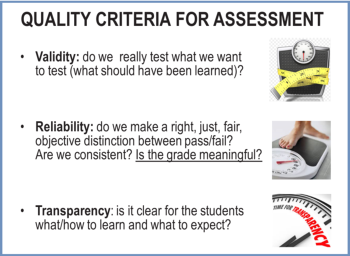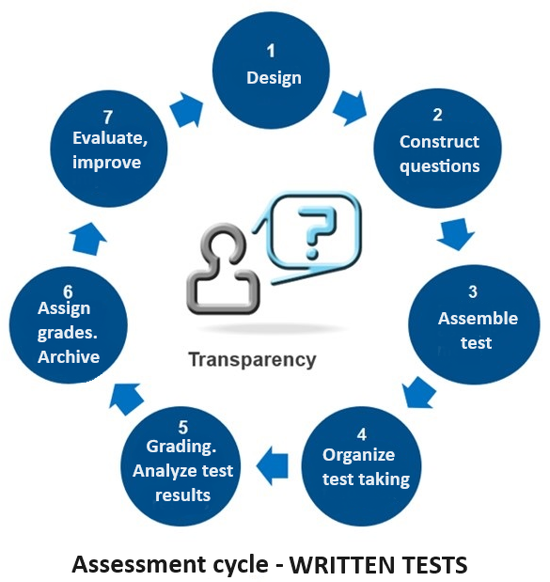Introduction - The assessment cycle and quality criteria
Designing good quality assessments, related to your teaching activities and learning objectives (constructive alignment), is not easy but very important, as the statement indicates. The assessment steers the learning process and has substantial consequences for the students. That is why you want to ensure your assessment will be valid, reliable, and transparent. And efficiency and practicability may also be important factors. Designing, administering, assessing, grading, and evaluating assessments can be seen as a cyclical process with several steps. In our toolbox, we give you guidelines and suggestions on each step of this assessment cycle. After the design phase, the steps differ for assessing with written tests or assignments. We therefore show two different cycles with the related links. |
|
The first general step is the same for both cycles: 1. Design (learning objectives, method choice, assessment scheme, specification table). | |
| Steps for Written Tests> 1. Design > 2. Construct questions > 3. Assemble test > 4. Organize test-taking / fraud issues > 5.1 Grading (from score to grade) > 5.2 Analyze test results > 7. Evaluate and improve |
|---|---|
| Steps for assignments |



